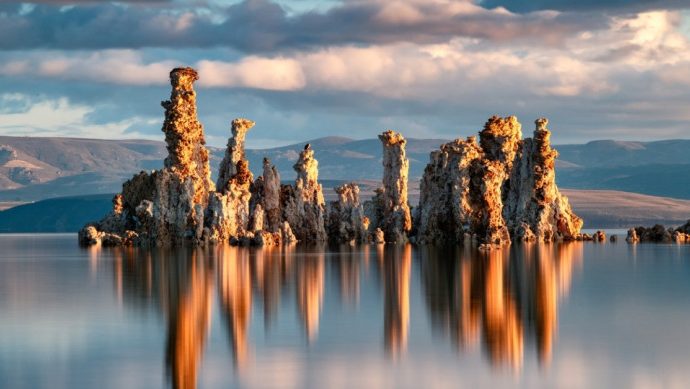Researches at Caltech discovered a new worm species in Mono Lake, known for its harsh conditions.
Source: Interesting Engineering
Not much can survive in Mono Lake, located in the Eastern Sierras of California, but one thing that is apparently thriving is a new species of worm that has three different sexes.
A team of Caltech scientists discovered the new worm species, which they dubbed Auanema sp., can survive 500 times the lethal human dose of arsenic and has three sexes. What’s more, the researchers found they carry their young inside their body.
Only algae, bacteria thought to thrive in Mono Lake
The study is notable because prior to its results, only two other species were known to thrive in Mono Lake, which is much saltier than other oceans and has an alkaline PH of 10. The two species are bacteria and algae. The findings were published in the journal Current Biology.

Much of the research on the new worm species was conducted at the laboratory of Paul Sternberg a Bren Professor of biology who is focused on nematodes, or tiny worms and more specifically the Caenorhabditis elegans, which are a type of worm that has only 300 neurons but can sleep, learn, smell and move around. They can also easily survive and thrive in labs in normal room temperatures.
Sternberg lab graduates Pei-Yin Shih and James Siho Lee figured they would find a lot of these tiny worms in the Mono Lake, but instead they found eight species that were resilient to arsenic conditions including Auanema sp. The scientists were blown away by the fact the new species could thrive in a lab under normal, non-extreme conditions, which they are used to. That, said the researchers, implies these worms are predisposed to be resilient and flexible when placed in different environments.
“Extremophiles can teach us so much about innovative strategies for dealing with stress,” said Shih in a press release announcing the results of the research. “Our study shows we still have much to learn about how these 1000-celled animals have mastered survival in extreme environments.”
More research needs to be done
The researchers said they plan to study the new species of worm more to determine what genetic factors enable them to thrive and to sequence the genome of Auanema sp. to look for genes that make them resistant to arsenic.
“It’s tremendously important that we appreciate and develop a curiosity for biodiversity,” said Shih noting the team was required to obtain special permits for their fieldwork at the lake. “The next innovation for biotechnology could be out there in the wild. A new biodegradable sunscreen, for example, was discovered from extremophilic bacteria and algae. We have to protect and responsibly utilize wildlife.”

































Leave a Comment
You must be logged in to post a comment.